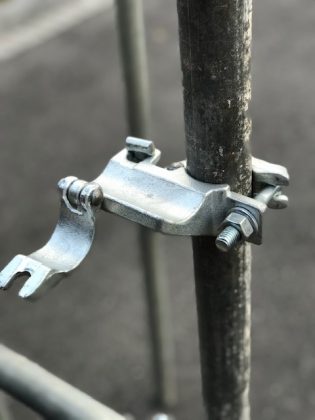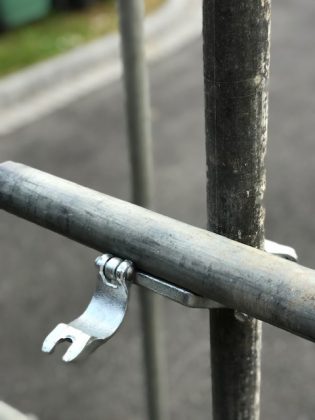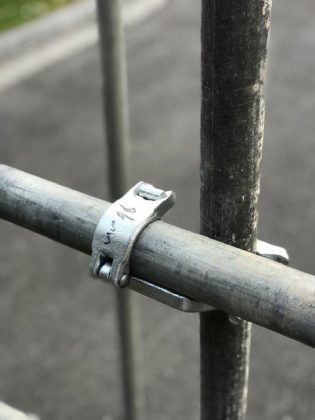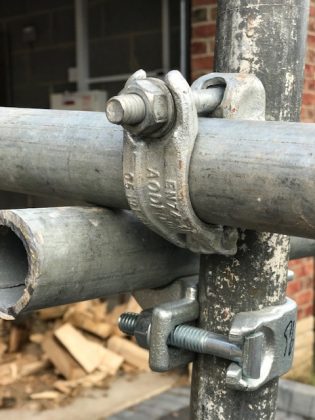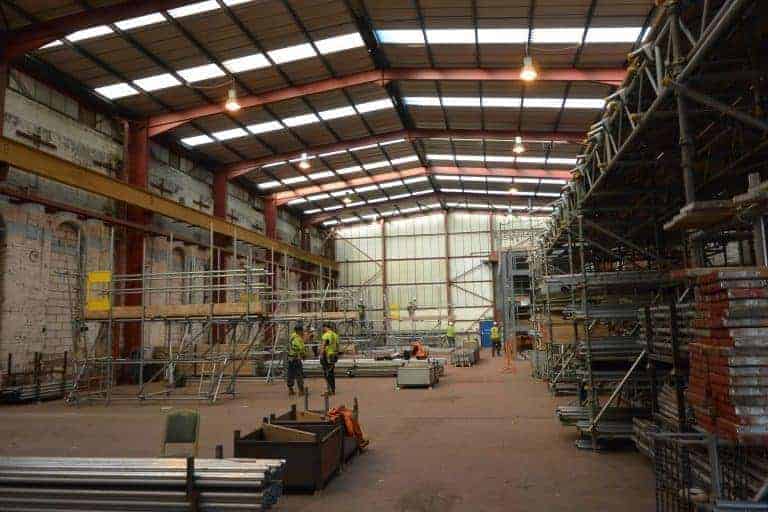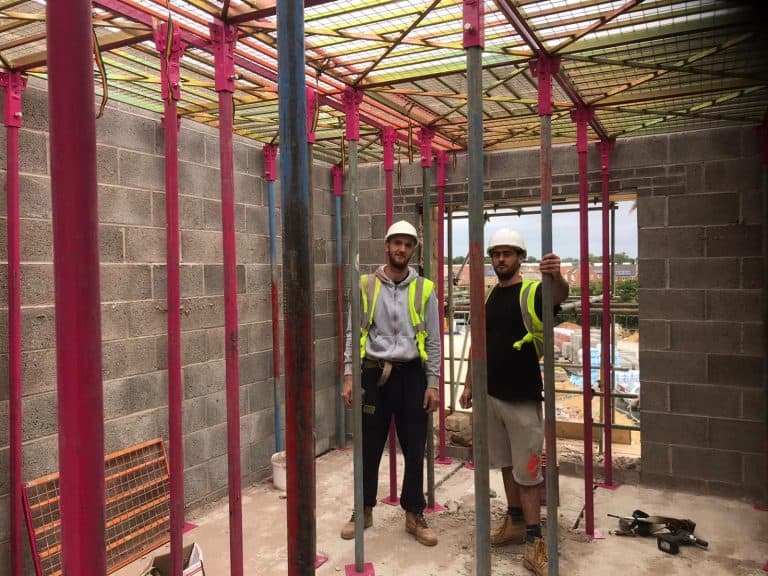Introducing The Klasp, A Next Generation Scaffold Fitting
Overseas Scaffolding Training Recommences
Overseas scaffolding training is slowly beginning to recommence at a number of training centres across the globe, CISRS has reported.
Simian International’s Overseas Scaffolder Training Scheme (OSTS) centre in Dubai and the Simian/QISC partnership in Qatar have both reopened, having been closed. for several months due to the Covid-19 pandemic.
Abid Gul, Simian Skill’s Senior CISRS Instructor in Dubai, said: “We’re delighted to be back training, having been closed since the first week of March. We are running at a limited capacity with a maximum of six delegates at a time, in line with the social distancing rules in the UK and the UAE.
“All delegates, successfully completed the course and closely followed the COVID procedures we have put in place.”
Dave Mosley, CISRS Managing Director, said: “It’s fantastic news that Simian International OSTS centres in Dubai and Qatar are back in operation.
“We want all centre staff and course delegates to remain safe and healthy as such they have had to submit detailed COVID specific RAMS and procedures prior to training taking place. I think we are all looking forward to getting back to some form of normality and recommencing training in other locations as soon as it’s safe to do so.”
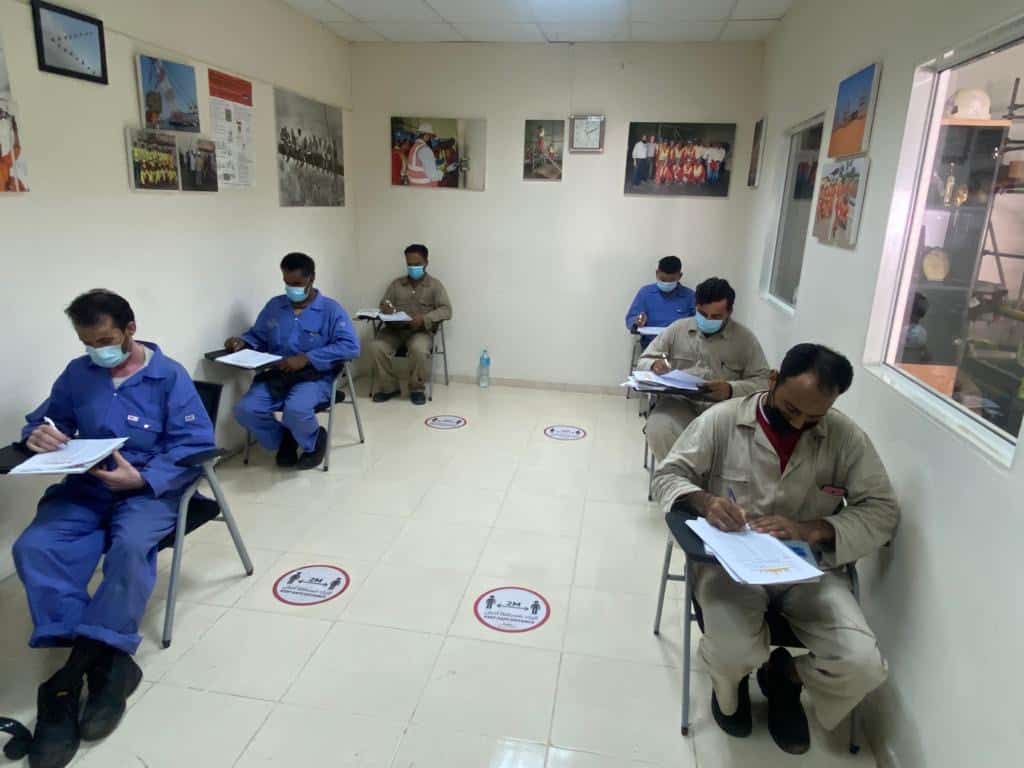
The Safety & Access / PERI Malaysia partnership has also recommenced training having recently completed two CISRS Scaffold Inspection training courses at their centre in Selangor.
CISRS and the OSTS providers are keeping a keen eye on the Covid-19 situation internationally, with several OSTS partner centres preparing to reopen as soon as local guidelines allow.
Altrad Generation to Close Wakefield Training Centre
Altrad Generation has officially announced the planned closure of its Yorkshire based scaffolding training centre.
In a statement released to Scaffmag today, Altrad Generation’s Wakefield Training Centre is to close its doors for the final time on the 28th of August 2020. A business review showed the ongoing impact of the COVID-19 virus highlighted that the firm is unable to provide effective scaffolding training safely and economically, both now and in the future. The statement supplied reads:The global COVID-19 crisis has created an unprecedented economic environment across all sectors and countries. These challenges have forced us to review our operations and how we continue to serve our customers safely.
The need to ensure staff and customers remain safe has disproportionately affected scaffolding and construction training. Our review and assessment of the ongoing impact of the COVID-19 virus highlighted we are unable to provide effective scaffolding training safely and economically, both now and in the future.
We have explored all options, but with great regret have taken the difficult decision to announce the closure of our Wakefield Training Centre.Since opening in 2006 it has grown into a centre of excellence for scaffolding training. This is down to the team’s hard work and passion: providing training and support for more than 10,000 individual scaffolders and apprentices. They have also been tackling the industry skills shortage through the national #GiveConstructionaTry initiative.
In spite of our success, COVID-19 affected the number of courses and delegates we can support coupled with a significant downturn in bookings.
We have maintained operations to ensure Wakefield’s closure does not impact any delegates who have either started courses or were due to complete their course in recent months. Courses that were halted midway through March this year due to the Covid-19 lockdown were completed under new social distancing guidance during July and August.
We are currently liaising with our training course and apprenticeship partners to help place apprentices with alternative providers. Where possible we have also been contacting learners and employers individually to complete portfolios. This includes internal and external verification so that portfolios can be taken and used elsewhere if needed.
If delegates portfolios are not able to be completed by the time of our planned closure on the 28th August, we are contacting known employers to give them the opportunity for collection. We will continue to store any uncollected portfolios for a further six months until February 2021 when they will be destroyed.
Any courses that were paid for and not delivered at any time are being refunded.
Whilst the training centre closes its doors on the 28th August we will retain a dedicated email address [email protected] for any enquiries or questions relating to past delegates.
We are currently reviewing 3rd party training vendors to continue providing customer training and support. These discussions are ongoing and will be making a further announcement at the end of this process.
Finally, I would like to thank all our customers, delegates and staff who have attended and continue to support us.
Industry charity offers free wellbeing training for all in construction
As a direct result of the wellbeing issues presented to their 24/7 Construction Industry Helpline, the Lighthouse Construction Industry Charity has announced that they are delivering £20,000 of free mental health and wellbeing training to the industry for the remainder of 2020.
One of the key findings of the charity’s recently published 2019 Impact Report was that 62% of emergency financial grants were to pay for daily living costs, paying bills and clearing rent arrears and debt. Financial wellbeing is one of the key factors affecting mental health and the introduction of ‘bang on budget’ financial management sessions, aim to directly address these issues.
The fallout of Covid-19 has also seen an increasing number of redundancies across the industry and the charity has augmented its wellbeing programme to include two sessions aimed at improving employability with ‘At the Interview’ and a ‘CV Workshop’.
Bill Hill, CEO of the Lighthouse Construction Industry Charity said: ”A crucial element of our strategy is to pro-actively support the industry’s mental wellbeing and ensure the widespread availability of construction focussed training programmes. These range from hour long interactive wellbeing sessions through to the full two day MHFA England approved Mental Health First Aider course. This will ensure that companies have easy access to a robust wellbeing strategy to support every level of their organisation from the boots on the ground workforce through to senior management. We are a CITB approved training organisation (ATO) which means that our courses are delivered to a defined and industry-agreed training standard and most are CPD accredited ensuring they contribute to personal career and professional development.”
The charity is also offering it’s Company Supporters priority access to the MHFA England half day Mental Health Awareness course and two day Mental Health First Aider courses.
Bill Hill added, “Offering these courses free of charge removes the final barrier for many smaller construction organisations to access these valuable and much needed training courses. Our focus is to continually develop and expand our pro-active wellbeing education and training programme, alongside the immediate reactive support provided by our 24/7 Construction Industry Helpline and accompanying app. Thanks to the generosity of our industry’s support, we can make our charitable services accessible to everyone so that we can achieve our mission in ensuring that no worker or their family are alone in a crisis.”
Free Wellbeing Sessions
- Work, life balance – what is good ‘work life balance’ and how to achieve it.
- Coping with stress – causes and coping mechanisms.
- Mindfulness – what is mindfulness and how can you implement it
- Resilience – building resilience and keeping it growing.
- Meditation – an introduction to meditation from a construction professional
- Bang on Budget – looking after your finances, budgeting and debt management
- CV Workshop – Showcasing your attributes and getting an interview
- At the Interview – Tips and skills to shine on the day
Free MHFA England approved Mental Health Training for Company Supporters
- Half Day Mental Health Awareness
- Two Day Mental Health First Aider
Find out more and book your free courses now
Benefits of Mental Health and Wellbeing Training
- Build employees’ confidence to have open conversations and break the stigma
- Encourage people to access support early, for a faster recovery
- Empower those with a long term mental health issue or disability to thrive in work
- Promote a mentally healthy environment, stopping preventable issues and allowing people to thrive and become more productive
- Embed a long term positive culture across the whole organisation, so that employees recognise their mental and physical health are supported as equal parts of the whole person? ?
Survivex has new manager at the helm
Training provider, Survivex, has appointed a new general manager to oversee day-to-day operations and support key training management service clients.
Jamie Purves comes to Survivex from drilling contractor, Valaris, where he was regional training and competency manager responsible for personnel working in the North Sea and Norway regions. Having worked in training and competency for almost 20 years, Jamie has extensive experience of the sector. Initially starting out as an instructor, he quickly progressed his career into management, working for Wood-owned, M&O Global, as training manager at its OPITO-approved technical training centre in Egypt. Following this, Jamie moved to the Philippines with Site Group International where he became general manager at a 30-hectare government-approved training facility helping young people gain invaluable skills for future employment. Jamie is currently in the final year of an MBA at Robert Gordon University in Oil and Gas Business Administration. His first priority will be to look at how 3t Energy Group’s technology expertise and technology-led training tools can be incorporated into the customer experience to enhance learning and improve efficiencies for clients. Jamie said: “Joining Survivex and the 3t Energy Group is extremely exciting. The Group’s vision to transform training through technology and help businesses work smarter, safer and more efficiently matches my own so this opportunity is a perfect fit for me. “I had experience of Survivex through my previous roles so was well aware of its outstanding reputation, fantastic facilities and knowledgeable instructors and was keen to join the team. “Survivex and the wider 3t Energy Group works very closely with its clients to truly understand their needs and provides everything from world-leading, industry-approved training to cloud-hosted software to manage training and technology-led tools such as simulators, virtual and augmented reality and mobile apps. The Group is really pushing the boundaries of educational technology and training and I’m really looking forward to being part of this journey helping businesses in Aberdeen and beyond improve their workforce management.” Paul Knowles, Vice President at 3t Energy Group, said: “We are delighted to welcome Jamie to Survivex and the 3t Energy Group. He has a fantastic track record in management and of building strong client relationships. Jamie also has unrivalled experience of training and competency from both the client’s side and a service-provider’s perspective. “The disruption caused by the Coronavirus has meant many companies are looking at how technology can be used to deliver training and we are uniquely positioned to be able to help and shape this through our internationally-renowned technology-led training solutions. With Jamie at the helm, Survivex will continue its world-class reputation in traditional training, as well as looking at new ways to enhance the training experience for all clients.”G-DECK Delivers Profit Opportunity to Scaffolding Firms
G-DECK, the company behind the strongest construction load deck on the market, has launched G-DECK Dual.
G-DECK Dual is a new hybrid system that enables scaffolding companies to offer decking to customers at a much lower cost.
Designed to combine the robust metal G-DECK decks with birdcage tube using G-DECK’s patented brackets, G-DECK Dual provides a more cost-effective investment than standard decking systems while delivering enhanced strength and safety.
Much faster to install than traditional birdcage, it allows scaffolding companies to tap into demand for load deck systems from housebuilders, developers and construction companies at a much lower investment level, while utilising their existing birdcage materials.
Explains G-DECK’s sales and marketing director, Ty Wilson: “Lots of housebuilders and construction companies are keen to switch to decking because of the timesaving, versatility, safety and cost benefits it brings them.
“For scaffolding companies, that can mean a sizeable investment, a yard full of redundant birdcage tubes and a need to store the new decking system. However, if they don’t make the switch, it could see them lose out of lucrative projects.”
“With G-Deck Dual we’ve solved those problems. The investment is much lower – even compared to a decking system of lower quality – and the profit opportunity is significant. Scaffolding companies can re-use their existing birdcage tubes using our easy-fix brackets. Our decks have been designed to offer market-leading levels of safety and strength and to stack neatly for secure storage. We genuinely have designed it with scaffolding companies in mind.”

G-DECK’s metal decks have a 600kg/m2 load capacity, making them the strongest load deck system on the market and ideal for projects where materials need to be delivered or stored on the deck at the work area.
Typically costing scaffolding companies at least £10/m2 less than a conventional decking system, G-DECK Dual requires much less time and labour to install than traditional birdcage, ensuring payback can be achieved quickly.
“We provide installation training for every system sold,” Ty Wilson adds, “and we can even powder-coat the brackets to colour-match scaffolding companies’ logos, as part of a complete solution.”
Free demos for the G-DECK Dual system can be booked on G-DECK’s website www.gdecking.com

